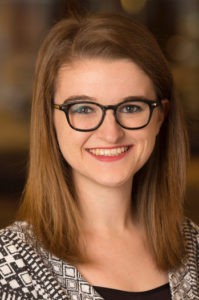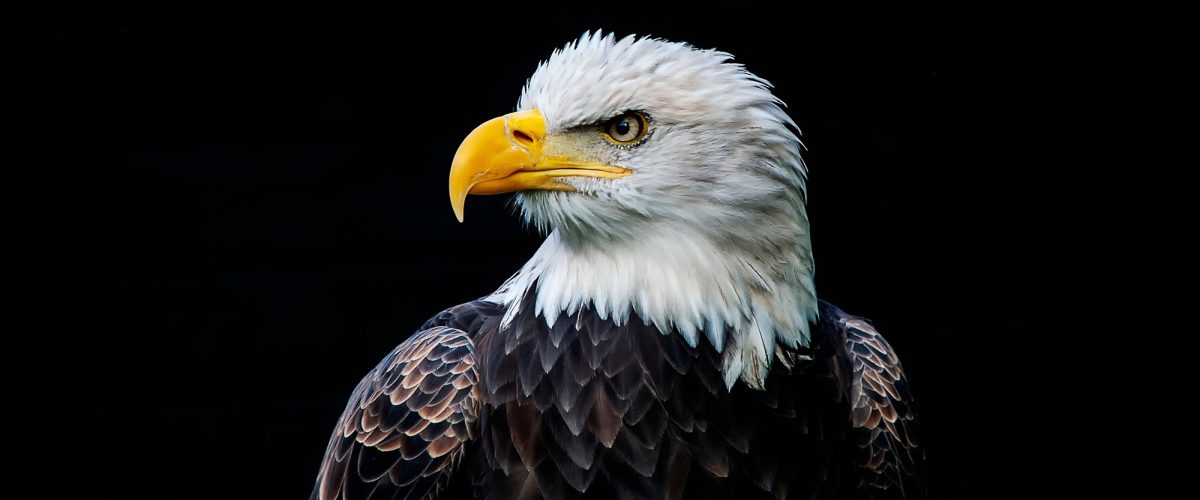Moderates are such an endangered species that even when you see one in the wild, they’re easy to miss.
Pick your favorite hot button topic of the day and you can likely summarize what the left and what the right think about the issue. Abortion, guns, gay marriage — it’s easy to determine which side is pro and which is anti. But where do the moderates fall? What do they believe?
Moderates are ideologically somewhere between liberals and conservatives. Individuals who identify as moderates have political identities. However, as a whole, they are hard to define and are declining in part because of this perpetual identity crisis.
The identities of the left and the right are intrinsically tied with their stances on specific issues. We could attempt to define each side with general terms to summarize overall political philosophies: Conservatives promote individual liberties and traditional social ideas, while liberals promote civil liberties and evolving social ideas. But most people would define liberalism and conservativism by describing each side’s stances on some of the most contentious political issues of the day.
The identity of moderates is not so easily tied to the group’s political viewpoints because there is so much variety. Political moderates in this country are most frequently defined by who they are not rather than who they are. In response to the identity question, moderates might look to liberals and conservatives and respond, “we’re not like them.” This sort of anti-identity offers little distinguishable information about the group.
Defining how our beliefs are different than the beliefs of people outside the group creates clear “in-group/out-group” boundaries. Rules and specific beliefs help form a sort of “social glue” that strengthens the bond and identity of the group.
“A lack of distinguishable identity is bad for the moderate ‘brand,’ and it does little to attract new members.”
Put simply, a lack of distinguishable identity is bad for the moderate “brand,” and it does little to attract new members.
Strictness is sticky
This is the case not only for political moderates but for Christians and churches who identify as moderates. Religious sociologists have long agreed that a level of “strictness” within churches strengthens the community and encourages growth by creating loyal followers of the religion who have to risk something in order to be a part of the group. This “strictness” is defined through a specific set of beliefs and principles that differentiate those who follow the religion from those who do not.
“Strict” churches have recognizable identities, which create a kind of social glue that bonds people within the group.
Social glue is imperative for the survival of any group. As a country with a strong two-party political system, moderates rarely have had a thriving constituency. But in recent years, political pollsters and pundits have particularly noticed that moderates are as difficult to find in American politics as they are to define.
Moderates are rare
Although we are still waiting for the final midterm election results, one thing is evident: There were very few moderates on the ballot this year.
One of the clearest causes for the endangerment of moderates is the intensified rise of partisan politics and polarization from both the left and the right. In their recent book, The Bitter End: The 2020 Presidential Campaign and the Challenge to American Democracy, the authors explore how political and ideological divisions increased in the wake of the 2020 election. They found that in 1952, 50% of voters perceived major differences between political parties, while in 2020 that number jumped to 90%.
“One of the clearest causes for the endangerment of moderates is the intensified rise of partisan politics and polarization from both the left and the right.”
When the chasm between the two parties is smaller, voters more easily recognize similarities between the world they want to live in and the world the opposite party is creating. They are more likely to agree with or even vote for a candidate outside their preferred party. In other words, they’re more likely to be moderate.
That is not the case when voters perceive major differences between parties. “When you appreciate that the other side is very far away on issues … you’re not leaning over to vote for them in an election or two,” said Lynn Vavreck, one of the book’s authors.
How we see the other
Perceived differences make voters more likely to seek out echo chambers and less likely to change their beliefs or settle for an ideological middle ground. The differences also cloud how people view the opposite party.
Voters “like the other side less than they ever have. … And they think that people on the other side are unpatriotic and immoral relative to average Americans. And so there’s this summary judgment about people like that, people in that group are just not good people,” Vavreck said.
When those on the other side are seen as “not good people,” voters are not only less likely to cooperate with people across the aisle, they also are more likely to drift further to the fringes of their own party.
A glimmer of hope
Although polarization seems to be at an all-time high, there was a glimmer of hope for cooperation in the midterm elections. While moderates are endangered, Tuesday’s election proved that, at least in the voting booth, they are not completely extinct.
In a few states, early election results showed a small group of people cast split ballots, meaning they voted for a mixture of Republican and Democratic candidates. Most voters followed the pattern noticed by Vavreck and her co-authors, but a small percentage defied these polarized expectations of stark red and blue polarities.
“Split ballot voting hasn’t been popular since the 1980s, so its subtle return is fascinating and refreshing.”
Split ballot voting hasn’t been popular since the 1980s, so its subtle return is fascinating and refreshing. However, in 2022, split ballot voters are a rare breed, and the loudest voices continue to come from the extremes.
The few remaining moderates are often drowned out and disengaged by the intensity of the fringes. Whatever political or religious topic of controversy tops the headlines on any given day, the loudest and most fervent opinions come from the polar extremes.
We are living in a time when it’s frankly unpopular to stand in the middle. Extreme positions get more hits, more retweets, more airtime than the measured views of moderates.
We love extremes
We’re fascinated by extremes. It’s the train wreck theory — those moments that, while horrifying, disagreeable or abhorrent, are also captivating, and we can’t quite bring ourselves to look away. Human beings are drawn to the sensational. In our capitalistic society, the tendency to spectate creates a self-fulfilling cycle where the demand for sensationalism is met with plenty of supply.
Complex issues facing our country and the church are most often discussed in “pro” and “anti” polarities. While we hear most often from either side of the aisle about these stark dichotomies, national polls frequently reveal that many Americans have more nuanced views that are less extreme than those on the far left or the far right. And although some people find appeal in their political party moving further away from the center, others are turned off by their own party moving ultra-left or ultra-right and are horrified by the increasing extremism of the other side.
“Moderates are not necessarily an endangered species because they are nearly extinct.”
Moderates are not necessarily an endangered species because they are nearly extinct. Sometimes they are merely well-camouflaged in their silence. Moderates are more likely to be fed up with the perspectives from the fringes and fed up with politics altogether. This creates uninterest and disengagement in religion or the political process. And as fewer moderates are inclined to speak up, the more extreme voices continue to grow in volume, irritating the moderates who become disengaged — and the cycle continues.
And in religion too
It should come as no surprise that the problem of polarization and sensationalism is not partial only to American politics. The trend of disappearing moderates also has infected the realm of religion in this country, as moderate Christians are all but extinct.
The polarization of politics and the polarization of religion are linked. Moderates are more likely to reject religion because of high-intensity religionists and “the contemporary link between religion and right-wing politics in the United States,” according to one study.
As moderate religion continues to decline, more intense depictions of religion will increasingly define the American religious landscape. Mirroring the state of American politics, religion in America will continue to become more polarized.
In a time when Christians frequently worry about the trend of declining church attendance, let’s recognize who is leaving. Looking around the empty church pews to see who’s missing, we find that moderates are absent from under our steeples.
“Looking around the empty church pews to see who’s missing, we find that moderates are absent from under our steeples.”
“While conservative evangelicalism is still robust in the United States, this reduction process has driven out a lot of moderate Christians. Mainline Christianity (which is typified by moderate churches such as the United Methodist and the United Church of Christ) used to make up 30% of Americans. Today, it’s just 10%,” Ryan Burge, pastor and political scientist, writes in 20 Myths about Religion and Politics in America.
These decreasing trends are predicted to continue. A recent Pew Research Center study estimates that Christians will make up less than half of all Americans by the year 2070.
The study calculates that in less than 50 years, a mere 35% to 54% of Americans will identify as Christians. This is a decline from 64% of American Christians in 2020. The “nones,” or those who do not identify with any religion, could rise to the range of 34% to 52% of Americans.
More potent religion
“For those who have not chosen to become a ‘none,’ what is left is an even more concentrated version of American religion,” Burge wrote. “Put succinctly, American religion has become smaller but much more potent.”
This “potent” version of Christianity is predominantly characterized by conservative evangelicals. As the dominant form of Christianity, this right-leaning manifestation has effectively squeezed out moderates.
“Many people who would like to find a church home are left with a landscape that is either theologically conservative and incredibly devout on one side or completely irreligious on the other. Left with those choices, many Americans seem to be choosing to become a ‘none’ rather than an evangelical or conservative Catholic. Thus, as the middle disappears it becomes even more difficult to reverse this trend. So while those who still maintain a religious identity are more devout than ever, there are many who feel left out and spiritually homeless in the 21st century,” writes Burge.
Mislabeled?
There’s a final phenomenon about moderates worth mentioning. Occasionally, people are mislabeled as moderates when they fail to speak honestly about their viewpoints.
A few years ago, I went to a conference littered with heavy hitting speakers who represented some of the foremost progressive Christian thought in the U.S. today. Surrounded by the other conference attendees, a group of self-described “moderate” Christians, I was shocked at how excited and vocal so many of them were toward these liberal leaders. It seemed these “moderates” were in almost unanimous agreement with progressive viewpoints.
Discussing this phenomenon with a friend at the conference, he used the term “closeted liberals” to describe the attendees. Much of the week felt like a microcosm of escapism for closeted liberal Christians to have a place where they felt free enough to listen to the people they agreed with and for once say what they actually thought.
For Christians, these masquerading moderates are most commonly closeted liberals, as Christianity’s alignment with rightwing politics continues to grow in popularity and power.
“The church desperately needs brave Christians who aren’t afraid to speak their minds and share how their faith influences their opinions on some of the most contentious issues in society today.”
Years later I’m still struck by this conference. The church desperately needs brave Christians who aren’t afraid to speak their minds and share how their faith influences their opinions on some of the most contentious issues in society today, even if their opinions are unpopular and fail to toe the party line.
Many of the people attending the conference were religious leaders of some kind, shepherding groups of people with opinions and belief systems different than their own. Good leaders take into account the viewpoints and opinions of their congregants and constituents, and the pastoral response to leading such a church or organization is not to push personal beliefs onto the whole group. If these leaders were to share their beliefs, they might risk the faith of the people around them and the survival of the group they are leading.
Other times people stay quiet because they work within systems and institutions that disagree with their personal beliefs. For these religious leaders, speaking their minds has the potential of putting their careers or even safety at risk.
I recognize that being able to speak your mind is a privilege simply unattainable in some contexts. The truth is, there are always reasons for not speaking up. Many of them are good and even ethical reasons.
Courageous Christians
And yet, while speaking can be a risk, silence can be equally insidious. In these times of political and social polarization, the world needs courageous Christians. Let’s be brave enough to say what we believe. Surely the church can do more than stand silently on the precipice of moral ambiguity when it comes to complicated and controversial topics.
“Surely the church can do more than stand silently on the precipice of moral ambiguity when it comes to complicated and controversial topics.”
The closeted conference liberals were able to masquerade as moderates because of the stereotype that moderates are silent. In staying silent about controversial topics, these religious leaders either were mislabeled as moderates or adopted the label as an excuse to stay quiet and not rock the boat. This not only does a disservice to these religious leaders’ real and hidden convictions but also diminishes moderates to little more than patsies.
“Moderate” is not the default category for people who are too hesitant to speak up about controversial issues.
Homeless
Moderates might be difficult to define, less sensationalized than the fringes and occasionally hard to hear, but they are not extinct in American politics or religion. Nor are they unimportant.
I’m deeply struck by Burge’s words that so many people are left “spiritually homeless” in the 21st century. Our church and country have built a relatively unhospitable habitat for moderates. As Christianity’s alignment with right wing politics continues to grow in popularity and power, there are fewer and fewer spiritual homes for moderate and progressive Christians. Without a space in the middle to reside, folks of faith are leaving religion altogether.
The country desperately needs to hear from the unpopular voices of progressive Christians and moderate Americans. And the church desperately needs leaders who will boldly and compassionately envision a home where spiritual nomads can reject the flashy sensationalism of polarized views and settle into theological complexity.

Laura Ellis
Laura Ellis serves as project manager for Baptist Women in Ministry. She is a former Clemons Fellow with BNG and previously served in ministry with Safe Havens Interfaith Partnership against Domestic Violence and Elder Abuse. She lives in Waco, Texas, and earned a master of divinity degree from Boston University School of Theology.
Related articles:
Trump’s toxicity: A first take on the midterm elections | Opinion by David Gushee
Surviving this election season and repenting of idolatry | Opinion by Marv Knox


